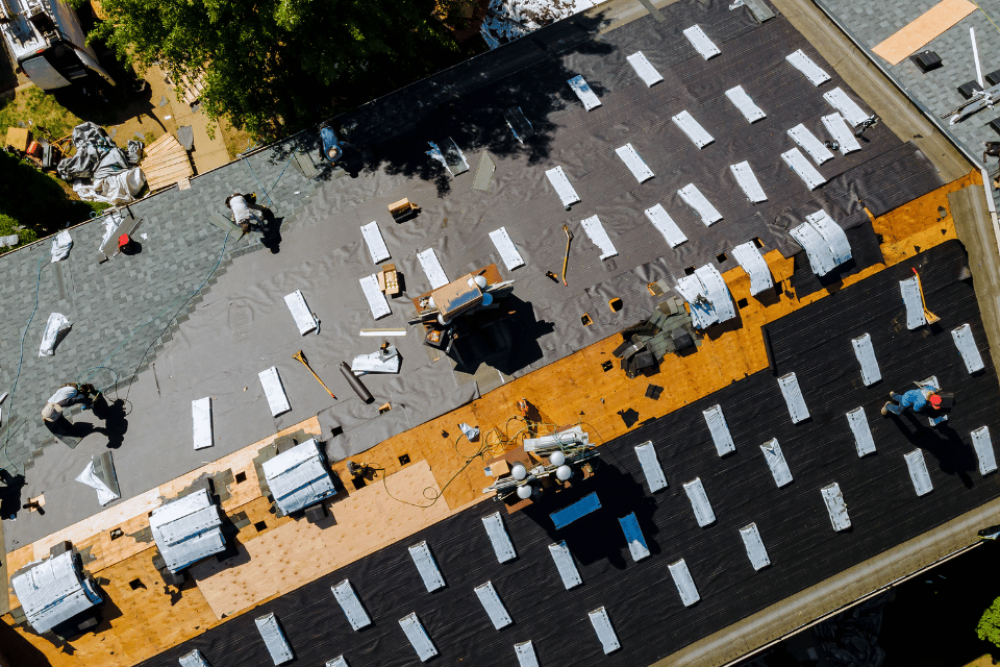
Maintaining Business Continuity During Commercial Roof Replacement
Ensuring uninterrupted business operations during a commercial roof replacement minimizes disruptions and maintains productivity. It requires careful planning and strategic execution to mitigate potential downtime and ensure the safety of employees and customers alike. We will explore effective strategies and considerations for businesses to navigate through a roof replacement project seamlessly.
During the Planning Phase
Effective planning lays the groundwork for a successful roof replacement project. Begin by selecting a reputable roofing contractor from Sienna Roofing & Solar, LLC, with a track record of completing projects on time and within budget. Collaborate closely with the contractor to establish a detailed timeline that aligns with your business's operational needs. This proactive approach allows for adjustments in workflow and scheduling to minimize disruptions to daily activities.
Communicating with Stakeholders
Clear communication with stakeholders is paramount throughout the roof replacement process. Notify employees, clients, and suppliers well in advance about the project timeline and potential disruptions. Hold regular meetings or send updates via email to keep everyone informed of any changes or adjustments to business operations. Maintaining transparency builds trust and understanding among stakeholders, fostering a supportive environment during the construction phase.
Implementing Safety Protocols
Safety should always be a top priority during a commercial roof replacement. Work closely with your roofing contractor to ensure all safety protocols are strictly followed. This includes erecting barriers or signage to designate construction zones and implementing procedures to minimize the risks of falling debris or equipment. Conduct regular safety inspections throughout the project to promptly identify and address potential hazards.
Minimizing Noise and Environmental Impact
Roof replacement projects can generate significant noise and environmental impact, which may disrupt neighboring businesses or residences. Consider scheduling noisy construction activities during off-peak hours or weekends to minimize disturbances to surrounding areas. Implement measures such as soundproof barriers or acoustic insulation to reduce noise levels within the workplace. Additionally, adhere to local environmental regulations regarding waste disposal and recycling to minimize the project's ecological footprint.
Maintaining Operational Continuity
Maintaining operational continuity requires proactive measures to address potential disruptions. Identify critical business functions that could be affected by the roof replacement and develop contingency plans to mitigate risks. This may include temporarily relocating essential equipment or services to unaffected building areas or arranging alternative work arrangements, such as telecommuting, for employees. By anticipating challenges and planning accordingly, you can ensure minimal impact on day-to-day operations.
Monitoring Project Progress
Regular monitoring of the roof replacement project is essential to tracking progress and promptly addressing any unforeseen issues. Schedule periodic meetings with the roofing contractor to review milestones, budget adherence, and potential schedule adjustments. Maintain open lines of communication to address concerns or delays promptly and collaboratively. By staying actively involved in the project's progress, you can proactively manage challenges and maintain stakeholders' confidence in completing the roof replacement.
Ensuring Quality Assurance
Quality assurance is critical during a commercial roof replacement to ensure that the new roof meets industry standards and provides long-term durability. Work closely with your roofing contractor to inspect materials and quality throughout the project. Conduct final inspections before approving the completion to verify that all specifications have been met and any deficiencies addressed. Investing in quality upfront helps prevent future issues and prolongs the life of your roof, minimizing the need for disruptive repairs or replacements down the road.
Managing Budget and Financial Planning
Managing the budget and financial aspects of a commercial roof replacement project is crucial for maintaining business stability. Work closely with your roofing contractor to establish a detailed budget that includes all costs associated with the replacement, including materials, labor, permits, and potential unforeseen expenses. Consider setting aside a contingency fund to cover unexpected costs or delays to prevent financial strain on your business. Regularly review the project's financial status to ensure adherence to budgetary constraints and make informed decisions regarding expenditures. By prioritizing financial planning, you can mitigate financial risks and maintain the financial health of your business throughout the roof replacement process.
Navigating a commercial roof replacement while maintaining business operations requires careful planning, clear communication, and proactive management. By implementing strategies such as effective planning, stakeholder communication, safety protocols, environmental considerations, monitoring project progress, ensuring quality assurance, managing budget and financial planning, and prioritizing employee safety and comfort, businesses can minimize disruptions and provide continuity during this critical infrastructure improvement. Remember, a well-executed roof replacement not only enhances the safety and longevity of your building but also reinforces your commitment to operational excellence, sustainability, and customer satisfaction. Planning and staying proactive is crucial to achieving a smooth transition and minimizing downtime during the roof replacement.

